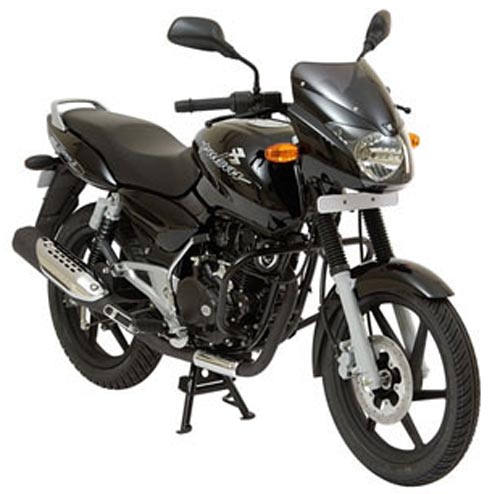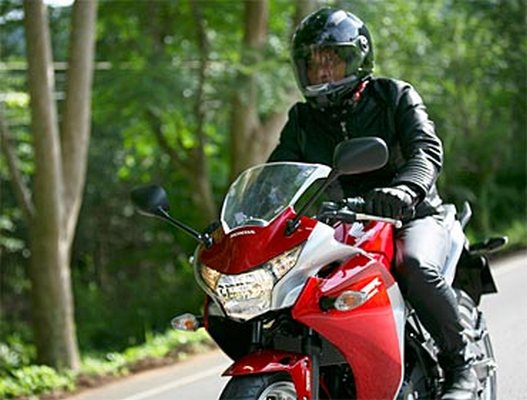
Bikes in India have come a long way from the quaint 100cc motorcycles that were permanent fixtures on our roads. Jyotsana Gupta of Bikedekho.com takes a look at some of the middle-weight bikes that have been the backbone of personal transportation in India.
Biking in India, is evolving, transforming and growing. It is evolving from the early ages of commuting to the modern era of cruising; it is transforming from being just a loyal, reliable and inexpensive means of everyday travel to being a fun and lively companion of those enthralling road trips; it is growing from the root levels of existing as just another two-wheeler towards the heights of taking the status of a deep-rooted passion in the young Indian hearts.
The gradual yet dramatic drift that the bike-industry has seen in India is truly incredible. From a time when only 100cc motorcycles, in their plain and (no offense) boring outfits, moved about the country's streets to the present day when state-of-the-art motorbikes could be seen soaring across the roads in their glittering armour, hiding behind which are some marvelous specimens of modern engineering, these rides have come a very long way and are ambitiously looking forward towards a glorious future.
Bikes, in their very basic element, might have been a concept that was brought to the shores of the Indian Peninsula by the waves rushing in from foreign lands, but the biggest turning point in the biking culture that changed the entire course of this sector in the country was ushered in by an Indian maker -- Bajaj Auto.
With the dashing range of Pulsar, stimulated by the 150cc/180cc twins in 2001, began a new chapter in the chronicles of Indian motorcycling where big and brawny rides played protagonist while the commuters became more of a supporting cast.
From then on, the 'cc' figures never saw a downward tread and now a time has arrived when the market is ruled by muscle-machines like Bajaj Pulsar 200NS, Kawasaki Ninja 250R, KTM Duke 200 and Honda CBR 250R.

Middleweight is the dominating species of today -– a race that does not just put on a flaring outfit to show off its brawny side, but one that carries the real force inside itself and believes in making its might felt and observed beyond the superficial layers of vision.
Each and every one of these bikes has something special to offer its rider and each of them blows all competition out of the water when it comes to their particular field of excellence.
Launched last year in India, Honda CBR 250R enjoyed the stature of the undisputed king of the high-performance segment of the Indian motorcycle industry and with the kind of stunning full-fairing armour that it flaunts and the almighty power-reserve that resides under its hood, nobody dared question the Japanese's supremacy.
But that was only until the Indo-Austrian rebel, KTM Duke 200, and the Indian champion from the past, Bajaj Pulsar in its 200NS avatar, had not stepped in and reignited the raging inferno of competition. That's when the phenomenal stop-and-go performance and unbeatable touring capabilities of CBR 250R finally met its match in the face of the unparalleled handling capacity of Pulsar 200NS and the unshakable captivation that Duke 200 held for its spectators.

The real havoc however was not wrecked over the market until Kawasaki Ninja 250R came out later this year and threw open challenge to the ruling trio taking the mercury to bursting point.
Although Ninja was up for a competition with all three of its arch rivals and all set to beat them, at that, but the real fight that broke out in the arena was with the only other quarter-litre smasher -- CBR 250R.
Outrunning the Honda champ on every track starting from speed, to performance, to comfort and finally to the very feel of sportiness that riding a big bike brings, the Kawasaki beast only falls behind when it comes to the price tag.
Excelling commendably at returning the value for the money that it costs, Honda CBR 250R comes out as the obvious choice on financial grounds as against the CKD species of Ninja imported from Thailand and assembled in Chakan.
But all this is just about the present day and the future is yet to arrive. Putting it simply, what the big bike segment has in store for the Indian audiences for the coming days is going to bowl them right over.
Going further beyond the limits of quarter-litre, the middleweight section of the motorbike market will soon be making its way towards higher levels of power and welcoming an all-new group of newbies into its clan including the likes of KTM Duke 390, Bajaj Pulsar 375 and Kawasaki Ninja 300R.

Anticipatively slated down for a 2012 Diwali launch, Ninja 300R is yet to drive out of its garage in India. Drawing power from a fabulous liquid-cooled, 4-stroke, 296cc Parallel Twin engine, this latest Ninja will be sharing the market with its 250cc predecessor.
KTM Duke 390, meanwhile, is set for release in March 2013. Predicted to be tagged around a sum of Rs 2 lakh, this new beast will be splitting its inventory of body-parts with the upcoming version of Bajaj Pulsar, titled as Pulsar 375. Both Bajaj spawns, both capable of going from 0-100kmph in less 7 seconds, both blessed with similar engineering and fitments and both donning outfits that can charm millions of beholders in a single breath, the competition that these siblings are going to pose for each other won't be one worth missing.